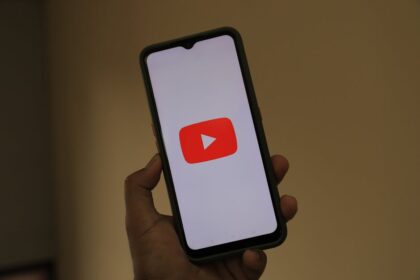Foundational Principles of User-Centric Content
User-centric content is a strategic paradigm that places the needs, preferences, and experiences of the target audience at the absolute core of every content creation and distribution effort. It represents a fundamental shift from traditional product-centric or company-centric messaging, where the primary focus might have been on features, services, or brand accolades. Instead, user-centricity champions the audience as the gravitational center, ensuring that all content serves a direct, tangible purpose for them, whether it’s solving a problem, answering a question, providing entertainment, or facilitating a decision. This approach is not merely about writing for an audience; it’s about deeply understanding them, empathizing with their world, and crafting content that resonates on a profound level, anticipating their needs before they even articulate them. It’s an investment in relevance, utility, and connection.
The importance of user-centric content cannot be overstated in today’s saturated digital landscape. Audiences are bombarded with information, and their attention spans are increasingly fragmented. To cut through the noise, content must immediately demonstrate its value. For businesses, adopting a user-centric approach yields a multitude of benefits, beginning with enhanced audience engagement. When content is specifically tailored to an individual’s interests and pain points, they are more likely to spend time consuming it, share it with their networks, and return for more. This heightened engagement translates directly into improved user experience (UX) metrics, such as increased time on page, lower bounce rates, and higher click-through rates, all of which are positive signals for search engines and contribute to better search engine optimization (SEO) performance. Search engines, particularly Google, are increasingly prioritizing content that genuinely serves user intent and provides a superior experience. Therefore, content that is user-centric by design naturally aligns with modern SEO best practices.
Beyond immediate engagement, user-centric content fosters deeper trust and credibility. By consistently providing value and demonstrating an understanding of their audience’s challenges, brands can position themselves as authoritative, helpful resources rather than just sales entities. This trust is foundational for building long-term customer relationships, driving brand loyalty, and ultimately, increasing conversion rates. When users perceive a brand as genuinely caring about their needs, they are more inclined to make a purchase, become repeat customers, and even advocate for the brand through word-of-mouth referrals. The return on investment (ROI) for user-centric content is often substantial, manifesting in improved lead quality, higher sales, reduced customer support inquiries (because content proactively answers questions), and stronger brand equity. It transforms content from a mere marketing tool into a strategic asset that fuels business growth by nurturing customer relationships.
The shift from product-centric to user-centric thinking requires a significant reorientation of internal processes and a cultural shift within organizations. Product-centric content typically focuses on “what” a product or service does – its features, specifications, and internal benefits from the company’s perspective. For example, a product-centric approach might describe a phone as having “a 50-megapixel camera and a 4000 mAh battery.” A user-centric approach, however, would focus on “what’s in it for the user,” transforming features into benefits. The phone now allows you to “capture stunningly detailed photos, even in low light, so your memories truly come alive,” or provides “all-day power, so you never miss an important call or message.” This reframe moves the narrative away from technical specifications and towards the user’s aspirations, challenges, and desires. It requires asking not “What do we want to tell our audience?” but “What does our audience need to know, feel, or do?” This foundational question guides every aspect of content strategy, from topic ideation to distribution.
Central to this transformative process is the role of empathy in content creation. Empathy is the ability to understand and share the feelings of another. For content creators, this means stepping into the shoes of the target audience, perceiving their world from their perspective, and internalizing their motivations, fears, pain points, and aspirations. It’s about moving beyond demographic data to grasp psychographic insights – why they make the choices they do, what keeps them up at night, what dreams they pursue. Empathetic content creators don’t just research their audience; they connect with them on an emotional level. This connection informs the tone of voice, the choice of vocabulary, the examples used, and even the solutions proposed within the content. True empathy allows content to anticipate questions, address unspoken concerns, and deliver information in a way that feels incredibly relevant and personal, rather than generic or detached. It transforms content from mere information delivery into a meaningful conversation, building rapport and solidifying the brand-audience bond. Without empathy, content risks falling flat, failing to resonate, and ultimately being lost in the digital ether. It’s the human element that breathes life into data and transforms raw information into compelling narratives.
Deep Dive into Audience Understanding: The Cornerstone
The bedrock of user-centric content is a profound, nuanced understanding of the target audience. Without this foundational insight, content creation becomes a guessing game, leading to generic, ineffective, and ultimately wasteful efforts. Effective audience understanding moves beyond superficial demographics to delve into psychographics, behaviors, motivations, and the intricate contexts in which users operate. It’s an ongoing investigative process that requires leveraging a variety of research methodologies and synthesizing disparate data points into cohesive, actionable insights. This comprehensive approach ensures that every piece of content created is not merely relevant but indispensable to the user.
Audience Research Methodologies:
A multi-faceted approach to audience research yields the richest data. Relying on a single method provides only a partial picture; combining qualitative and quantitative techniques offers a holistic view.
-
Surveys, Interviews, and Focus Groups: These are invaluable qualitative methods for gathering direct feedback and deep insights.
- Surveys can be distributed widely (via email, website pop-ups, social media) to gather quantitative data on preferences, satisfaction levels, and behaviors. Well-designed surveys ask targeted questions about challenges, preferred content formats, and what information they seek. Open-ended questions within surveys can also provide qualitative nuance.
- Interviews (one-on-one, structured or semi-structured) allow for in-depth exploration of individual experiences, motivations, and pain points. They provide the opportunity to ask follow-up questions, observe non-verbal cues, and uncover insights that might not emerge from a survey. Interviewing existing customers, lost leads, and even prospects who chose competitors can be highly enlightening.
- Focus Groups bring together a small, representative group of target users for a guided discussion. This method is excellent for understanding group dynamics, testing initial content ideas, or exploring reactions to specific concepts in a collaborative environment. The interaction between participants can spark new ideas and reveal collective sentiments.
-
Website Analytics (Google Analytics, Heatmaps, Session Recordings): Quantitative data from website analytics platforms provides crucial behavioral insights.
- Google Analytics (GA4) offers a treasure trove of information:
- Audience Demographics & Interests: Who is visiting? What are their interests?
- Acquisition Channels: How are users finding your content? (Organic search, social, direct, referral).
- Behavior Flow: How do users navigate your site? Which pages do they visit before converting or leaving?
- Content Performance: Which pages are most popular? What is the average time on page? Bounce rate? Exit rate? These metrics indicate content engagement and potential areas for improvement. High bounce rates on key pages might suggest content misalignment with user intent.
- Heatmap Tools (e.g., Hotjar, Crazy Egg): Visually represent user engagement on a page.
- Click Maps: Show where users click on a page, indicating areas of interest or confusion.
- Scroll Maps: Reveal how far down users scroll, highlighting content sections that are frequently missed or ignored.
- Session Recordings: Capture actual user sessions, allowing content strategists to observe how individual users interact with content, where they struggle, and what paths they take. This provides unparalleled qualitative insights into user experience frustrations or delights.
- Google Analytics (GA4) offers a treasure trove of information:
-
Social Media Listening: Monitoring conversations on social platforms (Twitter, Reddit, Facebook groups, LinkedIn) offers real-time, unfiltered insights into what your audience is talking about, their concerns, questions, and opinions related to your industry, products, or services. Tools can track brand mentions, competitor mentions, relevant hashtags, and trending topics, revealing critical pain points or popular discussions that can inspire content.
-
Competitor Analysis: Examining competitor content can reveal gaps in your own strategy or areas where competitors are excelling. Analyze their most popular content, their engagement rates, the keywords they rank for, and how they address user needs. This isn’t about copying, but about identifying opportunities for differentiation and improvement. What questions are they answering? How are they structuring their solutions? Can you do it better or from a unique angle?
-
Keyword Research for Audience Intent: Beyond simply finding high-volume keywords, modern keyword research focuses on understanding the intent behind search queries.
- Informational Intent: Users seeking answers to questions (e.g., “how to fix a leaky faucet”). Content: Blog posts, guides, FAQs.
- Navigational Intent: Users looking for a specific website or page (e.g., “Amazon login”). Content: Clear website navigation, brand pages.
- Transactional Intent: Users ready to buy (e.g., “best noise-cancelling headphones deals”). Content: Product pages, e-commerce listings, sales pages.
- Commercial Investigation Intent: Users researching before a purchase (e.g., “Bose vs. Sony headphones review”). Content: Comparison guides, reviews, case studies.
Tools like Google Keyword Planner, Ahrefs, Semrush, and AnswerThePublic help identify keywords and related questions, revealing what problems users are trying to solve and what information they need at various stages of their journey. Long-tail keywords often indicate very specific user intent.
-
Customer Support Insights: Your customer service representatives are on the front lines, constantly interacting with your audience and hearing their direct questions, complaints, and common issues. Analyzing customer support tickets, chat logs, and call recordings can uncover recurring pain points, common misconceptions, and frequently asked questions that are ideal fodder for user-centric content. Proactively addressing these issues through content can reduce support load and improve customer satisfaction.
Developing Comprehensive Buyer Personas:
Once research data is collected, the next critical step is to synthesize it into detailed buyer personas. A buyer persona is a semi-fictional, generalized representation of your ideal customer, based on real data and educated speculation about demographics, behaviors, motivations, and goals. Personas humanize your audience, making it easier for content creators to envision who they are writing for.
- Demographics: Basic data points like age range, gender, location, income level, education, occupation, family status.
- Psychographics: Deeper insights into personality traits, values, attitudes, interests, lifestyles, and opinions. What are their beliefs? What do they care about?
- Behaviors: How do they behave online? What websites do they visit? Which social media platforms do they use? What content formats do they prefer? How do they research products or services?
- Goals: What are they trying to achieve in their personal or professional lives? What success looks like for them?
- Pain Points/Challenges: What obstacles do they face? What problems keep them up at night? What frustrations do they experience related to your industry or solution?
- Information Sources: Where do they get their information? (Blogs, industry publications, social media, friends, experts).
- Decision-Making Process: What influences their purchase decisions? What are their common objections? Who do they consult?
Crafting Detailed Persona Narratives: Beyond bullet points, give your personas names, job titles, and brief stories. This makes them more tangible and memorable. For example, “Marketing Manager Mary” might be 35, works at a mid-sized tech company, is overwhelmed by lead generation, constantly researches new marketing automation tools, and relies on LinkedIn and industry blogs for information. This narrative helps content creators visualize Mary and tailor content directly to her challenges and aspirations. A company might have 3-5 core personas, each representing a distinct segment of their audience with unique needs.
Mapping the Customer Journey:
With personas defined, the next step is to map their journey. The customer journey outlines the path a user takes from initial awareness of a problem or need to becoming a loyal customer and advocate. Understanding this journey is crucial because content needs differ dramatically at each stage.
- Awareness Stage: The user recognizes they have a problem or need but may not know the solution or even that your brand exists.
- Content Need: Educational, high-level content that identifies and validates their problem.
- Content Types: Blog posts, articles, infographics, short videos, social media posts that address broad pain points or answer general questions. (e.g., “Signs you need a better project management tool”).
- Consideration Stage: The user has defined their problem and is researching potential solutions, including your product/service and competitors’.
- Content Need: Detailed, informative content that positions your solution as viable.
- Content Types: Ebooks, whitepapers, comparison guides, webinars, expert guides, in-depth blog posts, case studies that demonstrate how your solution works and its benefits. (e.g., “Top 5 project management tools for remote teams”).
- Decision Stage: The user is ready to make a purchase decision and is evaluating specific vendors.
- Content Need: Persuasive content that builds trust and highlights unique selling propositions.
- Content Types: Product pages, demo videos, testimonials, customer reviews, pricing pages, FAQs, free trials, consultations. (e.g., “Why [Your Tool] is the best choice for enterprise project management”).
- Retention/Post-Purchase Stage: The user has become a customer and needs support, guidance, and ongoing value.
- Content Need: Onboarding materials, troubleshooting guides, advanced tips, community support.
- Content Types: User manuals, knowledge base articles, tutorials, email newsletters, exclusive content, customer community forums, advanced webinars. (e.g., “Mastering advanced features in [Your Tool]”).
- Advocacy Stage: Loyal customers become brand advocates, referring others and sharing positive experiences.
- Content Need: Recognition, opportunities to share their success stories.
- Content Types: Case study participation, testimonial requests, referral programs, surveys for feedback, loyalty programs. (e.g., “Share your success story with [Your Tool] for a chance to be featured!”).
Mapping the customer journey helps identify content gaps, ensures that the right content is available at the right time, and facilitates a seamless user experience across touchpoints. It moves content beyond isolated pieces to a coherent, strategic narrative that guides the user effectively.
Crafting User-Centric Content: Strategic Approaches
Once a profound understanding of the audience and their journey is established, the focus shifts to the actual creation of content that embodies user-centric principles. This involves aligning content with specific user intents, emphasizing value and problem-solving, selecting appropriate formats, and cultivating a distinct, authentic brand voice.
Aligning Content with User Intent:
The primary goal of user-centric content is to satisfy user intent. User intent refers to the underlying goal a user has when typing a query into a search engine or navigating to a website. Ignoring intent leads to high bounce rates and poor engagement, regardless of how well-written the content may be.
- Informational Intent: Users are seeking knowledge or answers to specific questions. They are in research mode.
- Content Example: A blog post titled “How to Repot a Houseplant.”
- Strategy: Provide comprehensive, accurate, and easy-to-understand information. Answer the core question directly and provide supporting details. Use clear headings, bullet points, and visuals.
- Navigational Intent: Users want to reach a specific website or page. They already know where they want to go.
- Content Example: A search for “Amazon login.”
- Strategy: Ensure clear website structure, intuitive navigation, and well-labeled pages. Content should lead them directly to their desired destination.
- Transactional Intent: Users are ready to make a purchase or complete an action (e.g., sign up for a newsletter, download an ebook).
- Content Example: A search for “buy organic coffee beans online.”
- Strategy: Provide clear calls to action (CTAs), compelling product descriptions, secure checkout processes, and trust signals (reviews, security badges). Content should remove friction from the conversion path.
- Commercial Investigation Intent: Users are exploring options and comparing products/services before making a decision. They are close to buying but need more information to finalize their choice.
- Content Example: A search for “best CRM software for small business reviews.”
- Strategy: Offer comparison guides, detailed reviews, case studies, feature breakdowns, and testimonials. Highlight unique selling propositions and address potential objections.
Understanding SERP Analysis and User Expectations:
Before creating content for a specific keyword or topic, analyze the Search Engine Results Page (SERP) for that query. The types of results (e.g., featured snippets, video carousels, “People Also Ask” boxes, organic listings) indicate Google’s interpretation of user intent for that query. If SERPs show mostly listicles for “best [product],” then a listicle is likely the optimal format to satisfy that user intent. If they show “how-to” guides, then instructional content is needed. Analyzing the top-ranking content helps identify what users expect, what questions are typically answered, and what format is most effective.
Value Proposition and Problem-Solving:
At the heart of user-centric content is the unwavering focus on delivering value and solving problems for the audience, rather than just listing features.
- Focusing on User Needs, Not Just Features: A feature is a characteristic of a product or service. A benefit is what the user gains from that feature. Content must consistently translate features into benefits that resonate with the user’s aspirations or pain points.
- Product-centric feature: “Our software has AI-powered data analytics.”
- User-centric benefit: “Our software uses AI to instantly uncover hidden trends in your data, helping you make smarter, faster business decisions without needing a data scientist.”
- The “What’s In It For Me?” (WIIFM) Principle: Every piece of content should overtly or subtly answer the user’s unspoken question: “Why should I care about this?” The value proposition must be clear and compelling. Users are selfish with their time; they need to know immediately how the content will benefit them, whether by saving time/money, solving a specific problem, entertaining them, or helping them achieve a goal.
- Storytelling that Resonates: Humans are hardwired for stories. Storytelling is a powerful tool for empathetic communication. Instead of presenting dry facts, weave narratives that illustrate how others (your customers, or even hypothetical personas) have faced similar challenges and found solutions through your insights or offerings. Case studies, customer testimonials presented as stories, and narratives that highlight the “before and after” transformation are highly effective. Stories create emotional connection, make complex information digestible, and improve memorability. They allow users to see themselves in the narrative and imagine experiencing the benefits firsthand.
Choosing the Right Content Formats:
The optimal content format depends on the audience’s preferences, the content’s purpose, the stage of the customer journey, and the complexity of the information. A multi-format content strategy ensures you reach your audience wherever and however they prefer to consume information.
- Blog Posts/Articles: Excellent for informational intent, thought leadership, SEO. Versatile for how-to guides, lists, opinion pieces.
- Guides/Ebooks/Whitepapers: Ideal for in-depth exploration of a topic, lead generation, demonstrating expertise. Suited for consideration and decision stages.
- Videos: Highly engaging for demonstrating products, explaining complex concepts, storytelling, and building brand personality. Popular across all stages, especially awareness and consideration.
- Infographics: Visually appealing way to present data, statistics, or complex processes in an easily digestible format. Great for sharing on social media.
- Podcasts: Ideal for audiences on the go, building community, thought leadership, and deep dives into specific topics.
- Case Studies: Powerful for the consideration and decision stages, demonstrating real-world success and ROI. Build trust and credibility.
- Interactive Content (Quizzes, Tools, Calculators): High engagement, personalized experience, lead generation, and data collection. Keeps users on the site longer.
- Email Marketing Content: Nurturing leads, delivering personalized content, announcements, promotions, and building loyalty. Segmentation is key for user-centric emails.
- Social Media Content: Short, shareable, and highly visual. Builds brand awareness, drives traffic, fosters community, and gathers feedback. Tailor content to each platform’s nuances.
- Webinars/Live Streams: Excellent for interactive learning, Q&A sessions, demonstrating expertise, and building a direct connection with the audience. High lead generation potential.
Tone of Voice and Brand Personality:
The tone of voice is the personality of your brand expressed through words. It’s not just what you say, but how you say it. A consistent, authentic tone of voice is crucial for user-centric content because it shapes how your audience perceives your brand and influences their emotional connection.
- Consistency and Authenticity: Your tone should be consistent across all platforms and content types. Whether it’s a blog post, a tweet, or a customer service email, the brand’s personality should shine through. Authenticity means being true to your brand’s values and mission; trying to adopt a tone that doesn’t genuinely fit your brand will come across as inauthentic.
- Speaking Your Audience’s Language: This goes beyond simply using terms they understand; it involves mirroring their communication style, their level of formality, and their specific jargon (or lack thereof). If your audience is highly technical, using industry-specific terms is appropriate. If they are beginners, plain language is essential. Avoid corporate jargon or overly academic language if it alienates your audience.
- Building Trust and Connection: A well-defined and consistently applied tone of voice helps build trust. If your brand is perceived as helpful, friendly, authoritative, or witty, this consistent persona fosters a sense of reliability and connection. It makes your brand feel human and approachable, rather than like a faceless corporation. The emotional resonance created by an effective tone of voice significantly enhances the user experience and reinforces brand loyalty. It differentiates your content from competitors and makes it memorable.
Optimizing User-Centric Content for Discoverability and Engagement
Creating high-quality, user-centric content is only half the battle; the other half involves ensuring it’s easily discoverable by your target audience and that once found, it maximizes engagement. This requires a sophisticated understanding of modern SEO, principles of readability and accessibility, and diverse strategies to foster interaction and sustained interest.
SEO Beyond Keywords: Semantic SEO and Topic Clusters:
While keyword research remains fundamental, contemporary SEO is far more nuanced, shifting emphasis from simple keyword stuffing to a holistic understanding of user intent and topical authority.
- User Experience (UX) Signals: Search engines, particularly Google, increasingly use user behavior as a proxy for content quality and relevance.
- Dwell Time: The amount of time a user spends on a page after clicking on it from the SERP before returning to the search results. Longer dwell times indicate satisfied users who found what they were looking for.
- Bounce Rate: The percentage of visitors who navigate away from your site after viewing only one page. A high bounce rate often signals that the content didn’t match user intent or was not engaging.
- Click-Through Rate (CTR): The ratio of users who click on a specific link to the number of total users who view a page, email, or advertisement. A high CTR from the SERP indicates a compelling title and meta description that accurately represent the content’s value.
User-centric content naturally performs better on these metrics because it is designed to satisfy the user’s needs, leading to longer engagement and fewer bounces.
- Core Web Vitals and Page Experience: Google’s “Page Experience” signals, including Core Web Vitals (Largest Contentful Paint, First Input Delay, Cumulative Layout Shift), measure the real-world user experience of loading performance, interactivity, and visual stability. User-centric content is delivered on a user-friendly website; slow loading times, unresponsive elements, or sudden layout shifts detract significantly from the user experience, regardless of content quality. Optimizing these technical aspects is integral to user-centric SEO.
- Schema Markup for Rich Snippets: Schema markup (structured data) is code placed on your website that helps search engines understand the content and context of your pages. When properly implemented, it can enable rich snippets (e.g., star ratings, review counts, product prices, event dates) to appear in search results, making your listing more appealing and informative. This enhances discoverability and CTR, as rich snippets stand out. Examples include Article Schema, Product Schema, FAQ Schema, HowTo Schema, and Recipe Schema.
- Internal Linking Strategy: A robust internal linking structure helps search engines understand the hierarchy and relationships between different pieces of content on your site. It also guides users to related content, improving site navigation and prolonging their stay. For user-centric content, internal links should be contextually relevant, leading users to further information that addresses related questions or supports their journey through the sales funnel. This also aids in establishing topical authority through “topic clusters.”
- Topic Clusters: This SEO strategy organizes your content around broad “pillar pages” that cover a wide topic comprehensively, linked to numerous “cluster content” pages that delve into specific subtopics in detail. This structure not only signals to search engines your expertise on a broad subject but also provides users with a comprehensive resource, allowing them to explore related information easily.
- Mobile-First Indexing Considerations: Google primarily uses the mobile version of your content for indexing and ranking. Therefore, user-centric content must be mobile-responsive. This means it loads quickly, is easy to read on small screens, and provides a seamless experience for users accessing your site from smartphones or tablets. Overlooking mobile optimization is a critical failure in user-centric content delivery.
Readability and Accessibility:
High-quality content is useless if it’s difficult to consume. Readability and accessibility ensure that your content is understandable and usable by the widest possible audience, including those with disabilities.
- Simple Language, Short Sentences, Paragraphs: Avoid jargon, complex sentence structures, and overly long paragraphs. Aim for a Flesch-Kincaid reading ease score appropriate for your target audience. Break down complex ideas into digestible chunks.
- Headings, Subheadings, Bullet Points: These are crucial for visual hierarchy and scanability. Users often skim content before deciding to read in detail. Clear, descriptive headings (H1, H2, H3) allow users to quickly grasp the content’s structure and jump to sections relevant to their needs. Bullet points and numbered lists break up text and make information easier to digest.
- Visual Hierarchy: Use varying font sizes, bolding, italics, and white space strategically to guide the reader’s eye and emphasize key information. Ensure important elements stand out.
- Image Optimization (Alt Text): Images enhance engagement, break up text, and illustrate points. Optimize images for web (compressed file size for faster loading) and include descriptive alt text. Alt text serves two primary purposes: it describes the image for visually impaired users using screen readers, and it provides context for search engines, improving image SEO.
- Font Choice, Contrast: Choose legible fonts and ensure sufficient color contrast between text and background for comfortable reading, especially for users with visual impairments.
- ARIA Labels, Keyboard Navigation: For true accessibility, implement ARIA (Accessible Rich Internet Applications) attributes for dynamic content and ensure all interactive elements can be navigated and operated using only a keyboard, not just a mouse. This is vital for users with motor impairments.
Engagement Strategies:
Beyond discoverability, user-centric content actively seeks to engage its audience, encouraging interaction, connection, and repeat visits.
- Interactive Elements (Polls, Quizzes, Comments): Encourage active participation. Polls can gather opinions, quizzes can test knowledge or recommend products, and comment sections foster community and allow for direct feedback and discussion.
- Calls to Action (CTAs) – Clear, Compelling, Contextual: CTAs guide users to the next step. They should be clear (e.g., “Download Now,” “Learn More,” “Sign Up”), compelling (using action-oriented language), and contextual (relevant to the content they’ve just consumed). Place CTAs strategically within the content and at logical conclusion points.
- Personalization (Dynamic Content, Segmented Email): Delivering content tailored to individual user preferences, past behavior, or demographic data significantly boosts engagement.
- Dynamic Content: Website elements (e.g., hero banners, product recommendations) that change based on user characteristics or browsing history.
- Segmented Email Marketing: Sending different emails to different subscriber segments based on their interests, engagement level, or stage in the customer journey ensures relevance and higher open/click rates.
- Building Community and Encouraging User-Generated Content (UGC): Foster a sense of belonging.
- Community Forums/Groups: Provide spaces for users to connect with each other and with your brand.
- UGC: Actively solicit and showcase user-generated content (reviews, testimonials, photos, videos, social media posts). UGC is highly authentic and persuasive, building trust among potential customers and making existing customers feel valued. Contests, challenges, and dedicated hashtags can encourage UGC.
- Cross-Promotion and Distribution Channels: Distribute your user-centric content widely across channels where your audience spends their time.
- Social Media: Share snippets, questions, and links to your content.
- Email Newsletters: Promote new content to your subscriber base.
- Paid Advertising: Amplify reach for high-value content to targeted audiences.
- Influencer Partnerships: Collaborate with individuals or organizations whose audience aligns with yours.
- Syndication/Guest Posting: Reach new audiences by publishing content on other relevant platforms.
Effective distribution ensures that even the most user-centric content finds its intended audience, maximizing its impact and driving ongoing engagement.
Measuring and Iterating: The Continuous Cycle of User-Centricity
User-centric content is not a one-time project; it’s a continuous, iterative process of creation, measurement, analysis, and refinement. To ensure content remains relevant, effective, and truly serves the audience, it’s essential to establish robust measurement frameworks and cultivate a culture of ongoing learning and adaptation. This feedback loop is what truly distinguishes user-centric strategy from sporadic content efforts.
Key Performance Indicators (KPIs) for User-Centric Content:
Measuring the success of user-centric content requires looking beyond vanity metrics to focus on indicators that reflect actual user engagement, satisfaction, and business impact.
- Engagement Metrics: These directly reflect how users interact with your content.
- Time on Page/Average Session Duration: Longer times often indicate content relevance and engagement. Users are spending more time consuming and processing the information.
- Scroll Depth: Reveals how far down a page users are scrolling, indicating which sections of your content are being seen and consumed. Tools like heatmaps provide visual insights.
- Shares, Likes, Comments: Social engagement metrics indicate content resonance and whether users find it valuable enough to share with their networks or discuss.
- Click-Through Rate (CTR) on Internal Links/CTAs: Shows whether users are taking the desired next steps within your content, indicating content effectiveness in guiding the user journey.
- Conversion Rates: Ultimately, content should contribute to business goals.
- Lead Generation (Form Submissions, Downloads): How many users convert into leads after consuming specific content?
- Sales/Purchases: How does content influence direct sales or contribute to the sales funnel? Attribution models become important here.
- Trial Sign-ups/Demo Requests: For SaaS or service-based businesses, content should drive users to experience the product.
- Brand Mentions, Sentiment Analysis: Monitoring mentions of your brand across social media, forums, and review sites, and analyzing the sentiment (positive, negative, neutral) helps gauge overall brand perception and the effectiveness of content in shaping it. This indicates whether your content is building trust and a positive reputation.
- SEO Rankings, Organic Traffic: While not purely user-centric, improved search rankings and increased organic traffic are direct results of content that satisfies user intent and provides a good user experience. These metrics indicate discoverability and overall content authority.
- Customer Feedback (Surveys, Reviews): Direct feedback from your audience is invaluable.
- Content-Specific Surveys: Asking users directly if the content was helpful, answered their questions, or if anything was unclear.
- Product Reviews/Testimonials: These reveal customer satisfaction with your offerings, often influenced by the content that led them to the product.
Tools for Analysis:
Leveraging the right tools is crucial for gathering, analyzing, and visualizing the vast amounts of data needed to measure user-centric content performance.
- Google Analytics 4 (GA4): The foundational analytics platform. Provides comprehensive data on user behavior, acquisition, engagement, and conversions. Its event-based model is particularly suited for tracking specific user interactions with content.
- Google Search Console: Essential for SEO performance. Shows how your site performs in Google Search results, including impressions, clicks, average position, and identifies search queries that lead users to your site. Helps pinpoint user intent and content gaps.
- Heatmap Tools (Hotjar, Crazy Egg, Microsoft Clarity): Offer visual insights into user behavior on specific pages through heatmaps, scroll maps, click maps, and session recordings. They provide qualitative insights into why users behave the way they do.
- A/B Testing Platforms (Google Optimize, Optimizely): Allow you to test different versions of content (headlines, CTAs, layout, images) to see which performs better in terms of engagement or conversions. This direct experimentation is critical for optimizing user experience.
- CRM Systems (Salesforce, HubSpot, Zoho CRM): Integrate marketing and sales data to track the customer journey from lead to conversion, attributing content’s role in the sales pipeline. They help understand the long-term impact of content on customer relationships.
- Social Media Analytics (Native platform insights, Sprout Social, Buffer): Provide data on content reach, engagement (likes, shares, comments), audience demographics, and sentiment on social platforms.
- SEO Tools (Ahrefs, Semrush, Moz): Beyond keyword research, these tools offer competitive analysis, backlink profiles, technical SEO audits, and content gap analysis, all of which inform content strategy and optimization for user intent.
The Importance of Feedback Loops:
A user-centric approach inherently relies on continuous feedback from the audience. This feedback informs future content decisions and ensures that strategy remains agile and responsive to evolving needs.
- Gathering Direct and Indirect Feedback:
- Direct: Surveys, interviews, focus groups, comments sections, direct messages on social media, customer support interactions.
- Indirect: Website analytics (behavioral patterns), social media listening (unsolicited mentions, trends), search console data (new queries, performance changes).
- Implementing Changes Based on Data: Insights gathered from analytics and feedback should directly inform content iterations. If a blog post has a high bounce rate, it might need clearer headings, a more engaging introduction, or a re-evaluation of its alignment with the search query. If users consistently ask a specific question in support, it’s a prime candidate for a new FAQ or knowledge base article.
- User Testing and Usability Studies: For critical content pieces or new website sections, conducting formal user testing (observing real users interact with your content) can uncover usability issues and areas of confusion that data alone might not reveal. This deep qualitative insight is invaluable.
Iterative Content Development:
User-centric content is never truly “finished.” It’s a living asset that requires ongoing care and attention to maintain its relevance and effectiveness.
- Content Audits and Updates: Regularly review existing content to assess its performance, accuracy, and relevance. Outdated information can harm credibility and user experience. Identify content that needs refreshing, removal, or repurposing.
- Repurposing and Refreshing Evergreen Content: Content that remains relevant over a long period (“evergreen content”) is a valuable asset. Regularly refresh it with new data, examples, or updated best practices. Repurpose it into different formats (e.g., turn a popular blog post into an infographic, a video, or a podcast episode) to reach new audiences and extend its lifespan.
- Adapting to Evolving Audience Needs and Market Trends: Audiences are dynamic; their needs, preferences, and the information they seek can change due to new technologies, market shifts, or societal trends. User-centric content strategy must be flexible enough to adapt. Stay attuned to industry news, competitor moves, and shifts in user behavior (e.g., changes in search queries or social media trends) to proactively adjust your content strategy and ensure it remains aligned with your audience’s current reality. This responsiveness is the ultimate hallmark of a truly user-centric approach, ensuring content continuously delivers maximum value.











